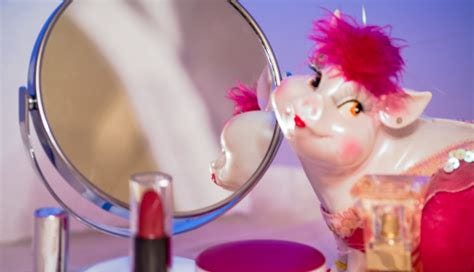You Better Be Selling That Pig-Slapped Lipstick
The Title Slide is your first and maybe your last impression.
Once Upon a Pitch Problem #8
All that remains is the perfect graphic for your Title Slide. You search images endlessly, trying one after the other. You change colors. You change fonts. You change layouts. You think about hiring a photographer or a graphic artist. Finally, you select a good enough image, comforting yourself that the pitch deck is compelling and the Title Slide is just fluff. You start the pitch and before you can move on from the Title Slide, your audience is already asking you questions about something you don’t make for customers that aren’t yours and it only goes downhill from there.
Solutions
A picture is worth a thousand seconds. Your Title Slide may be your only slide. I have been in many pitch and acquisition meetings with the Title Slide commanding more than half of the meeting time. Often the Title Slide is loaded and then a long delay ensues, leaving the audience staring at that Title Slide while introductions run on and on, or the pitch start is delayed waiting for tardy leaders to join, or technical issues waylay flipping the deck. Meanwhile that Title Slide is on everyone’s mind for many seconds, then many minutes, then all the minutes. Your Title Slide may be your first and only impression; make sure it can withstand being your first and only slide.
“Once Upon a Time . . ..” Once Upon a Time is the entire set up of a story with the characters, the place and the circumstances all introduced. Is this story in a fabled land with a castle and a royal family or is it in a distant galaxy with a spaceship flying to an alien planet? The Title Slide is your Once Upon a Time. The who (you and the company), the what (the product) and the where (the market segment) need to be on the Title Slide so the audience starts grounded in the right story and travels along with you through the why (the customer problem to be solved) and the how (the making and selling of the product). Do not leave your audience to guess at what they are supposed to learn from the Title Slide. Audiences will naturally and quickly fill in any blanks and clarify any confusion with their own story before you start. Set up your Once Upon a Time on the Title Slide so the audience has no choice but to jump into your world and follow your story.
First do no harm. I was asked to help a software startup because their pitch audiences were consistently confused. I prepared for our meeting by learning about their market and product, software that annotates digital photos and videos in real time with contextual information like road names. I excitedly leaned forward to view the pitch deck on my conference call screen and with the Title Slide displayed, my excitement turned to anxiety before the founder even said a word. I was looking at a large, unmanned, military style drone in flight. I had researched the wrong product for the wrong market. I quickly reset my mind from scalable commercial software with 72% margins to expensive hardware for the government. As the pitch progressed, I became completely lost, trying to fit the story into a hardware framework and none of it making sense. When the founder finished, I asked to go back to the Title Slide and queried, “Do you make that drone?” “No, we make software.” I continued, “Ah, so the software you make will be embedded on that hardware?” “No, our SAAS software is accessed by users from their devices, correcting images provided by drones like this one,” the founder replied while pointing at the Title Slide. No hardware? Check. No software embedded on hardware? Check. Standard SAAS? Check. Hot diggity! This was an easy pitch to fix because the bulk of the confusion was on that Title Slide. By removing the drone and adding “software” to the strapline, the pitch was instantly clarified. Going a step further with the storytelling, we pulled forward a picture buried deep in the deck to the Title Slide: an aerial ‘before’ image of an anonymous city block next to the now dramatic and revealing identical ‘after’ image displaying geolocation, buildings marked “hospital” and “gas station,” highlighted power lines, and other critical decision-making features. Now the Title Slide told their story.
What They Said
Let’s look at what legendary filmmaker Billy Wilder says about the importance of a good first act: “If there is something wrong with the third act, it’s really in the first act.” Most of us have no problem understanding the importance of the first act of a joke. When someone tells a joke poorly it is more likely than not that they have forgotten to convey an important piece of information in the set up that makes the punch line funny. So it seems the joke is in the set up and not the punch line.
Just as with a joke, a story’s set up must tell the audience everything they need to know to understand the story . . . Remember, when you create a story, you must let the audience know the reality of your story. It’s your world. - Brian McDonald, “Invisible Ink: A Practical Guide to Building Stories That Resonate,” page 8.
See You on the Track
Rafferty Jackson
Author The First Principles Pitch, startup storyteller, board member, advisor and investor. Once Upon a Pitch is a weekly newsletter looking at one business pitch problem and offering storytelling solutions to help solve that problem.


